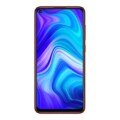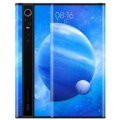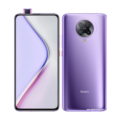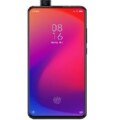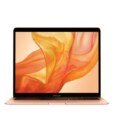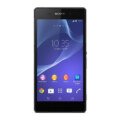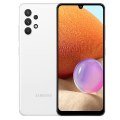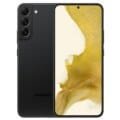Xiaomi Redmi K50i

Xiaomi Redmi K50i - Specs
Overview
| Launch | 20 July 2022 |
| Status | Available |
| Network Technology Global wireless standard for telecommunication | GSM / HSPA / LTE / 5G |
| Price (Initial) | ₹ 18,9K |
Design
| Body Type Design Type called form factor refers to a mobile phone's size, shape, and style as well as the layout and position of major components of phone. There are three major form factors seen in mobile phones => bar phones, folding phones and sliding phones. | BAR |
| Dimensions | 163.6 x 74.3 x 8.9 mm, (6.44 x 2.93 x 0.35 in) |
| Weight | 200 g, (7.05 oz) |
| Colors | Phantom Blue, Stealth Black, Quick Silver |
Display
| Display Type Display Technology => A number of display technologies and types used in mobile phones => TFT (Thin Film Transistor), IPS (In-Place Switching), OLED (Organic Light Emitting Diode), AMOLED (Active-Matrix Organic Light-Emitting Diode), Super AMOLED (an even advanced version of AMOLED), Resistive Touchscreen (Resistive touchscreens contain two layer of conductive material with a very small gap between them which acts as a resistance), Capacitive Touchsceen (Capacitive touchscreen technology consists of a layer of glass coated with a transparent conductor) | FFS LCD |
| Pixel Density Pixel Density (PPI) is refers to the concentration of pixels on a particular display, measured in pixels per inch (ppi). Pixel density is calculated by dividing the diagonal pixel resolution of a display by its diagonal size, higher pixel density better display quality. | ~407 ppi density |
| Display Size Size of the area where pictures and videos are displayed. | 6.6 inches, FFS LCD |
| Resolution | 1080 x 2460 pixels |
| Protection Display Protection => Gorilla Glass is a special alkali-aluminosilicate glass shield with exceptional damage resistance that helps protect mobile displays from scratches, drops, and bumps of everyday use, It is always better to go for a smartphone with Gorilla Glass for that added protection and peace of mind. | Corning Gorilla Glass 5 |
Camera
| Primary Camera Camera is able to capture photographs and usually videos, The most important characteristics of a camera are the resolution (measured in megapixels), lens focus type (fixed or automatic), higher megapixel cameras are known to capture higher quality photos, but not always a good measurement of the photos quality. | 64 MP, 8 MP, 2 MP |
| Selfie Camera | 16 MP |
| Video |
4K@30fps, 1080p@30/60fps |
| Camera Features |
HDR, panorama |
| Flash Flash Light => There is commonly two types of flash lights are used in camera mobile phones, LED Flash (LED flash offers lower power consumption with drive circuitry that takes up very little room, LEDs can be strobed faster than any other light source), Xenon Flash (xenon flash produces an extremely intense full-spectrum white light for a very short duration) | LED flash |
Core Specification
| Operating System OS => Every computer system run on a base software called Operating System (OS). Operating System controls all basic operations of the computer (such as smartphone, PDAs, tablet computers and other handheld devices). The Operating System allows the user to install and run third party applications (apps), apps are used to add new functionality to the device. | Android 12 |
| CPU CPU (Central Processing Unit) mostly known as processors, CPU processes instructions in order to carry out certain functions that make your device operate properly. Processors are often described as the brain of computers, smartphones and tablets, Smartphones and tablets rely on processors to carry out their every task, Processors are an incredibly important factor in selecting any type of computing device, including your smartphone. | Octa-core (4x2.85 GHz Cortex-A78 & 4x2.0 GHz Cortex-A55) |
| Chipset Chipset is a group of integrated circuits designed to perform one or a more dedicated functions, often with real time computing constraints, Popular smartphones are equipped with more advanced embedded chipsets that can do many different tasks depending on their programming. | Mediatek Dimensity 8100 (5 nm) |
| GPU GPU (Graphics Processing Unit) is a single-chip processor designed to rapidly manipulate and alter memory to accelerate the creation of images in a frame buffer intended for output to a display, This includes things such as lighting effects, object transformations, and 3D motion. | Mali-G610 MC6 |
| RAM (Memory) RAM (Random Access Memory) is a type of computer memory that can be accessed randomly, any byte of memory can be accessed without touching the preceding bytes that allows information to be stored and accessed quickly from random locations. RAM is the most common type of memory found in computer systems, smartphones, tablets and other electronic devices. | 6GB, 8GB |
| Internal Storage Internal Storage is a data storage space (flash memory) mostly used in smartphones, tablets and other electronic devices where operating system, apps, music, photos, videos, files and other user data Is stored. | 128GB, 256GB |
Specification
| Sensors Sensors are electronic components that detects and responds to some type of input from the physical environment. The specific input could be light, heat, motion, moisture, pressure and location, The output is generally a signal that is converted to use in computing systems, a location sensor, such as a GPS receiver is able to detect current location of your electronic device. |
Fingerprint (side-mounted), accelerometer, proximity, gyro, compass, color spectrum |
| Battery Backup | Li-Po 5080 mAh, non-removable |
| User Interface UI or user interface of a device is the look and feel of the on-screen menu system. How it works, its color scheme, how it responds to button presses, all of these things are part of the user interface. | MIUI 14 |
| Wi-fi Wi-Fi is a popular wireless networking technology using radio waves to provide high-speed network connections that allows devices to communicate without cords or cables, Wi-Fi is increasingly becoming the preferred mode of internet connectivity all over the world. | Wi-Fi 802.11 a/b/g/n/ac/6, dual-band, Wi-Fi Direct |
| Bluetooth Bluetooth is a wireless communications technology for exchanging data between mobile phones, headsets, computers and other network devices over short distances without wires, Bluetooth technology was primarily designed to support simple wireless networking of personal consumer devices. | 5.3, A2DP, LE |
| Model | 22041216I |
| GPS GPS The Global Positioning System is a satellite-based radio navigation system, GPS permits users to determine their position, velocity and the time 24 hours a day, in all weather, anywhere in the world, In order to locate your position, your device or GPS receiver must have a clear view of the sky. | GPS (L1), GLONASS (L1), BDS (B1I+B1c), GALILEO (E1), QZSS (L1) |
| 3.5 mm Jack 3.5 mm jack is mostly found on earphones or headphones. | Yes |
| USB | USB Type-C 2.0, OTG |
| SIM Type | Dual SIM, (Nano-SIM, dual stand-by) |
| Infrared Infrared connectivity is an old wireless technology used to connect two electronic devices. It uses a beam of infrared light to transmit information and so requires direct line of sight and operates only at close range. | Yes |
| Loudspeaker | Yes |
Xiaomi has recently launched the K50i, the latest addition to its popular series. The Redmi K50i is a mid-range smartphone that comes with a host of impressive features and specifications. In this blog, we will take a closer look at the Redmi K50i and explore its design, display, performance, camera, battery life, and connectivity features.
Design and Display
The Redmi K50i comes with a sleek and modern design, with a 6.67-inch AMOLED display that has a resolution of 1080 x 2400 pixels. The device has a refresh rate of 120Hz, making it ideal for smooth scrolling and gameplay.
Performance
The Redmi K50i is powered by a Qualcomm Snapdragon 870 chipset, which is a high-performance processor designed for mobile devices. The device comes with up to 8GB of RAM and up to 128GB of internal storage, which can be expanded using a microSD card.
Camera
The Redmi K50i features a triple-camera setup that includes a 64MP primary sensor, an 8MP ultra-wide sensor, and a 5MP macro sensor. The device also comes with a 20MP front-facing camera for selfies and video calls.
Battery Life
The Redmi K50i comes with a 5000mAh battery, which provides enough power to last a full day of heavy usage. The device also supports 33W fast charging, which allows you to quickly top up your battery when needed.
Connectivity
The Redmi K50i comes with several connectivity features, including Wi-Fi 6, Bluetooth 5.1, and a USB Type-C port. The device also supports 5G connectivity, which allows you to stay connected to the internet even when you’re on the go.
Other Features
The Redmi K50i also comes with several other features, including dual speakers, an in-display fingerprint sensor, and support for Xiaomi’s MIUI 12 user interface.
Price and Availability
The Redmi K50i is at around $300, making it an affordable mid-range smartphone. The device is currently available in China, with no word yet on a global launch.
Conclusion
The Redmi K50i is an impressive mid-range smartphone that offers several advanced features and specifications. With its powerful processor, high-quality display, advanced camera setup, long-lasting battery, and 5G connectivity, the Redmi K50i is a great option for those who want a high-performance smartphone without breaking the bank. While it may not be the most powerful or feature-packed device on the market, the Redmi K50i offers excellent value for its price point.




